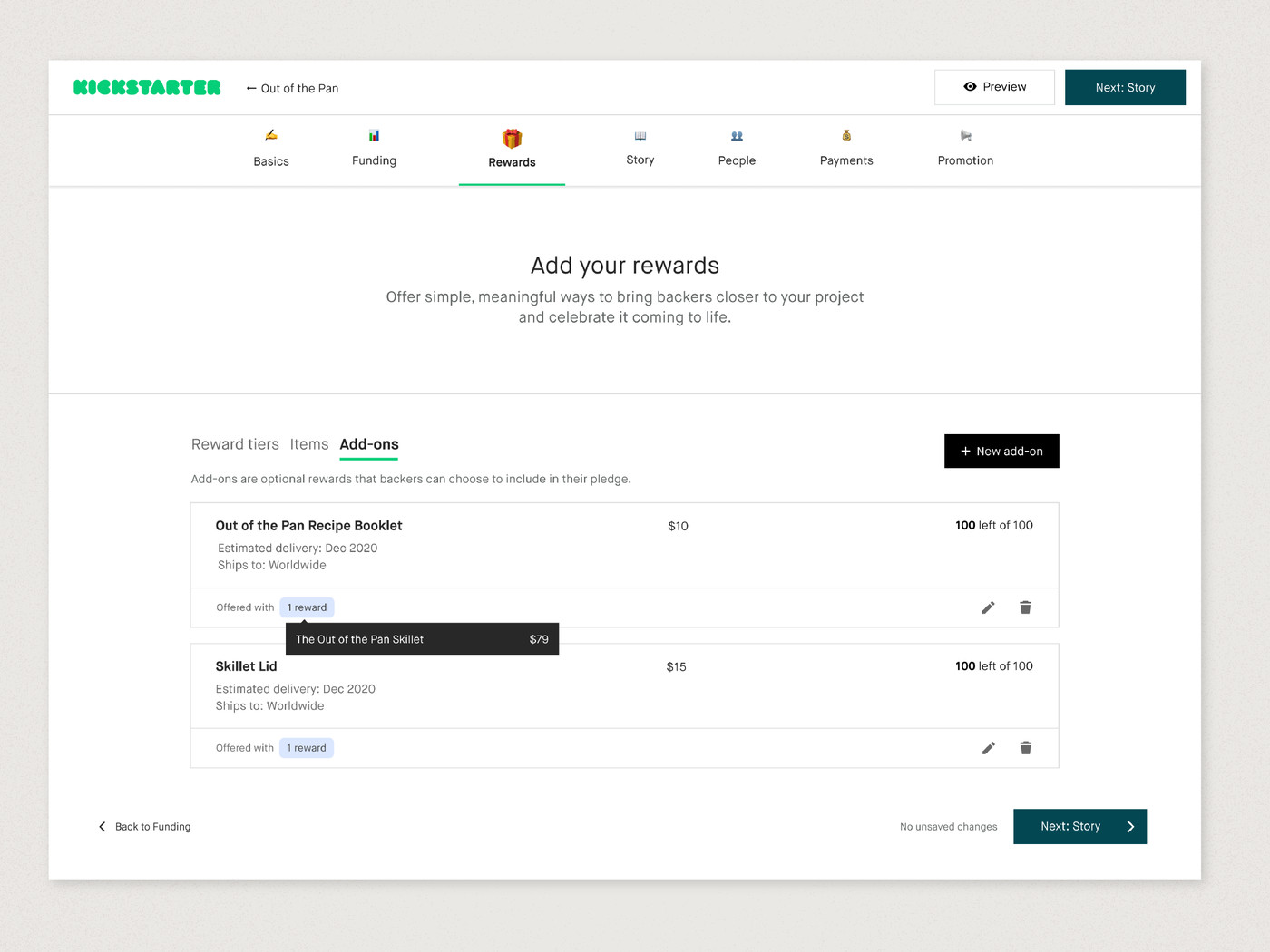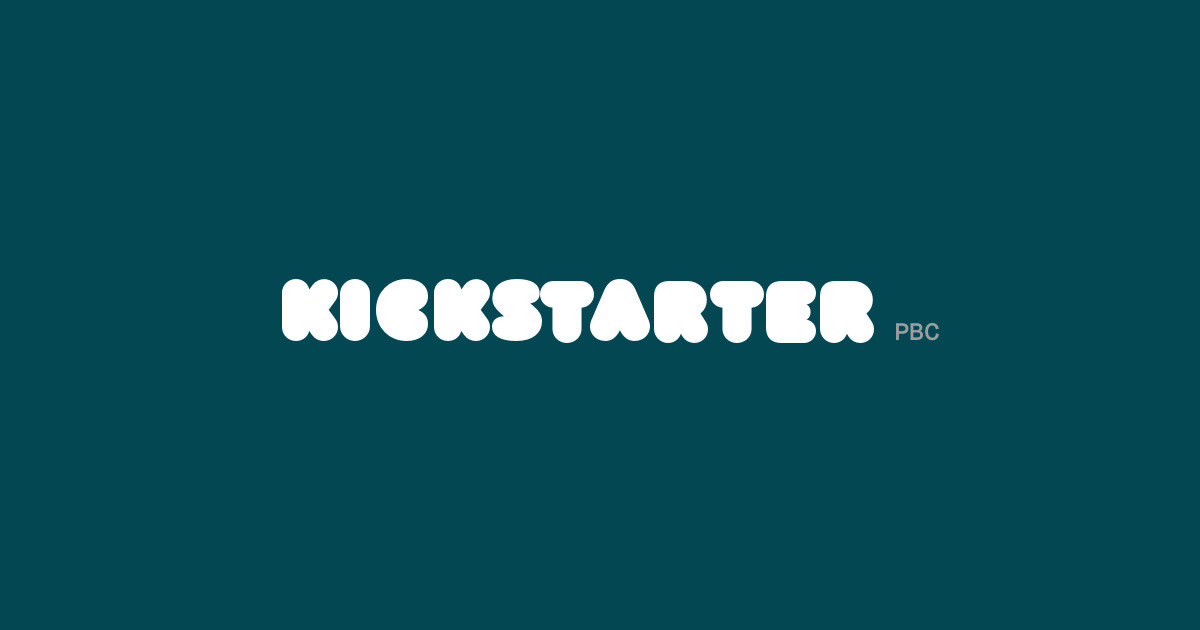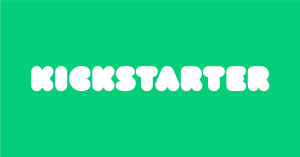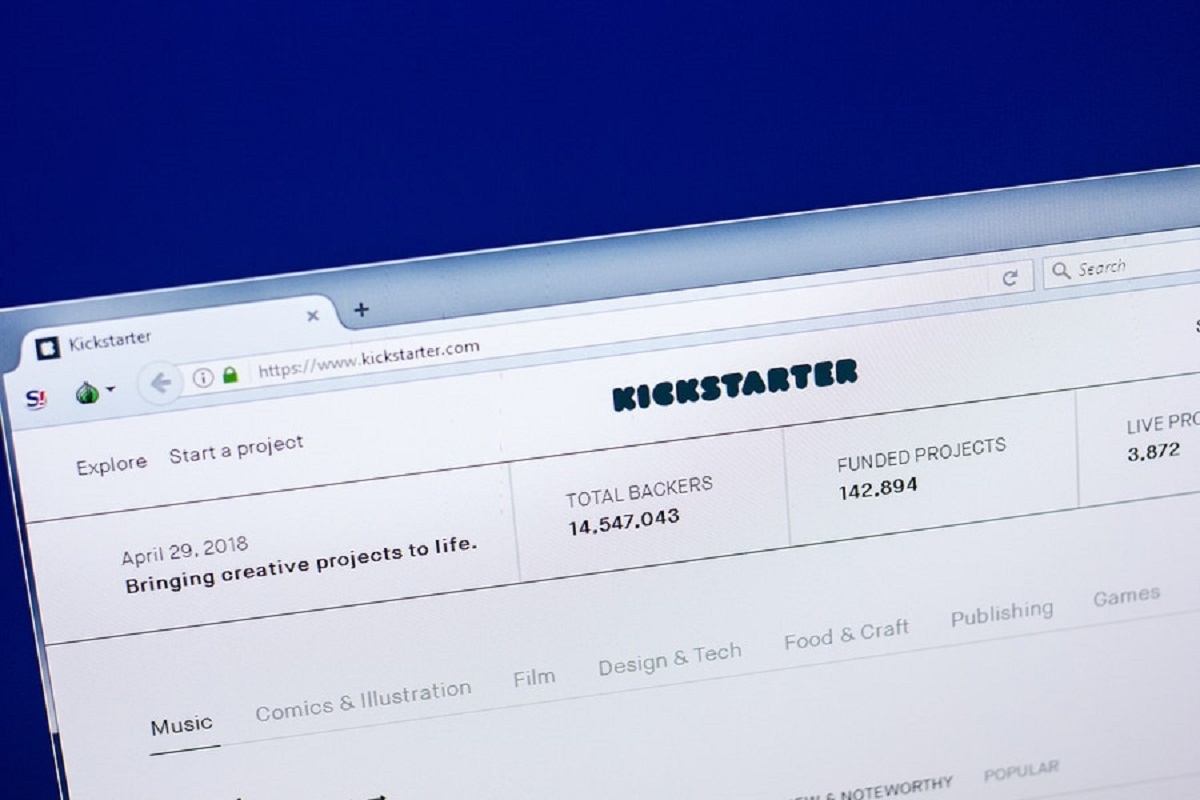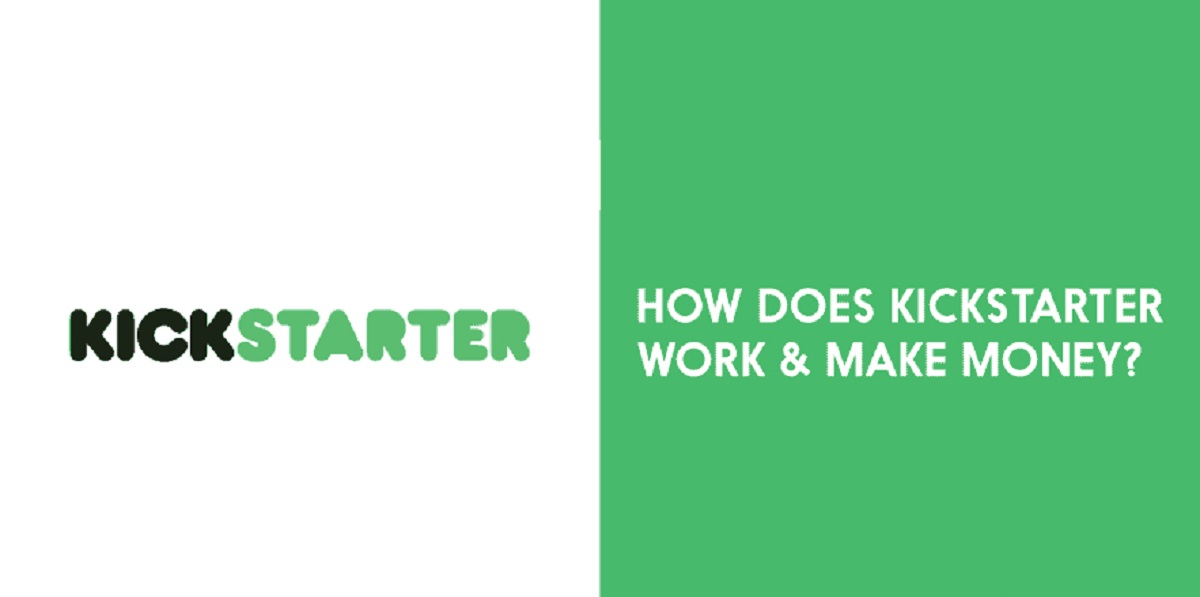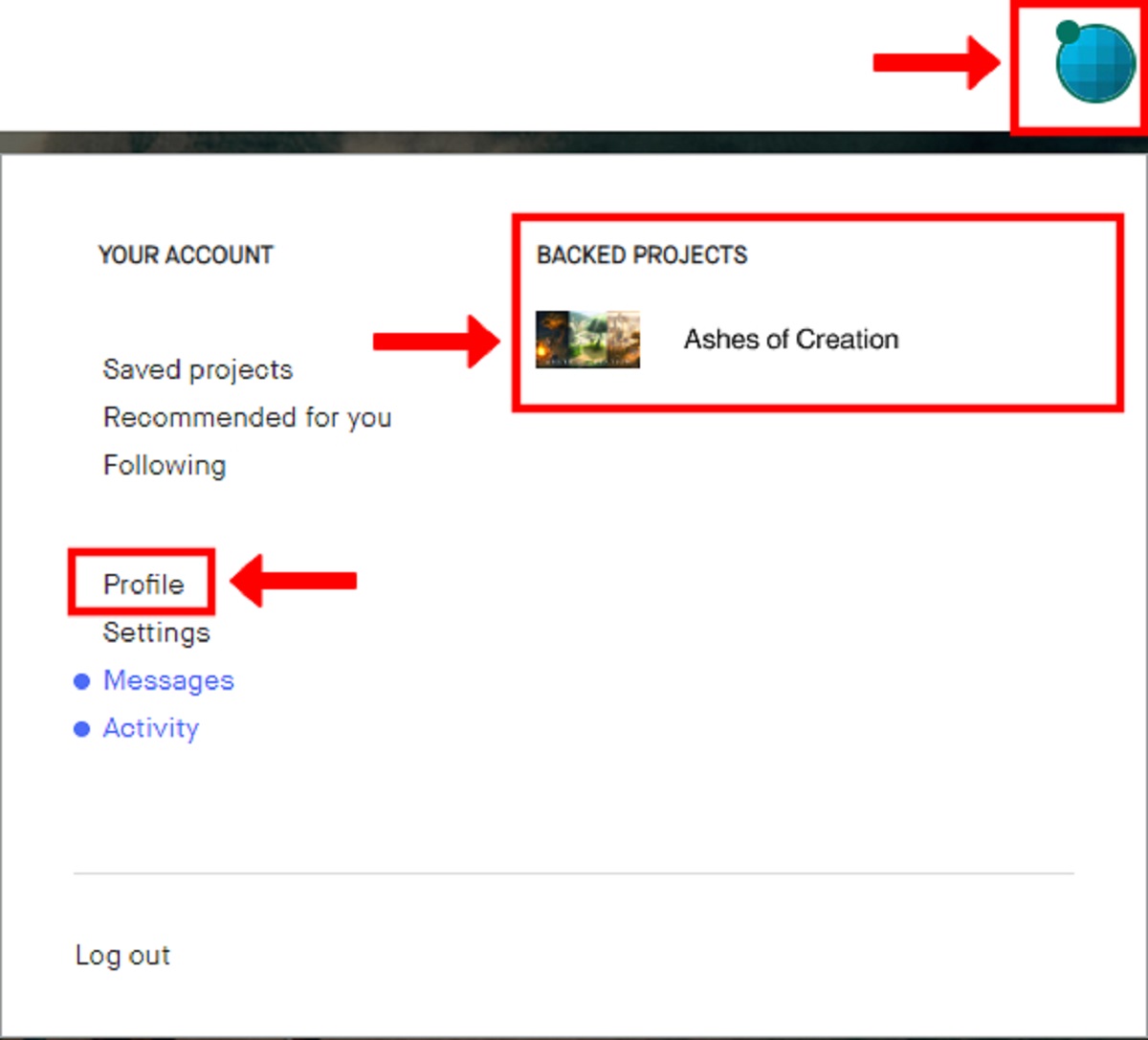What are Kickstarter Rewards?
Kickstarter rewards are incentives offered by project creators to backers who pledge their financial support to a crowdfunding campaign on the Kickstarter platform. These rewards serve as a way to thank backers for their contribution and incentivize them to support the project. Kickstarter rewards can take various forms, such as limited edition products, exclusive experiences, early access to the project, or personalized items.
When a creator launches a Kickstarter campaign, they will typically create a range of reward tiers that backers can choose from based on their pledge amount. Each reward tier will offer different benefits and perks, allowing backers to select the one that aligns with their interests and budget.
The concept of Kickstarter rewards goes beyond simply receiving a product in exchange for money. It creates a sense of community and involvement, as backers become part of the project’s journey by receiving special benefits and exclusive access.
Kickstarter rewards go beyond the traditional consumer-producer relationship, fostering a direct connection between the creator and the backers. This relationship is often built on trust and shared enthusiasm for the project, and the rewards serve as a way to strengthen this bond.
Moreover, Kickstarter rewards can help creators gather valuable feedback and input from their backers. By involving them in the process, creators can gain insights and improve their project based on the feedback received.
Kickstarter rewards are not just a token of appreciation; they can also play a vital role in the success of a campaign. Well-thought-out rewards can attract more backers and create a buzz around the project, increasing its visibility and reaching a wider audience.
In the next section, we will explore how Kickstarter rewards actually work and what steps are involved in setting them up.
How Do Kickstarter Rewards Work?
Kickstarter rewards operate on a system of tiers and pledge amounts. When a creator sets up their Kickstarter campaign, they determine different reward tiers that correspond to specific pledge levels. Backers can choose which reward tier they want based on the amount they pledge.
For example, a creator may offer a basic reward tier for a $10 pledge, which includes a digital thank you card. They may have another tier for a $30 pledge, which includes a physical copy of the product. And they might have a higher tier for a $100 pledge, which includes additional exclusive merchandise or experiences.
Each reward tier is designed to offer increasing value to backers as the pledge amount increases. This structure encourages backers to pledge more, as they can receive better rewards and perks at higher pledge levels.
Once the Kickstarter campaign is live, backers can choose the reward tier they want and make their pledges. The creator will then track each backer’s reward selection and pledge amount to ensure that the right rewards are delivered.
Throughout the campaign, creators often provide frequent updates to keep backers informed and engaged. These updates may include progress reports, behind-the-scenes content, and previews of the project. This helps to maintain excitement and build anticipation for the rewards.
After the Kickstarter campaign ends and the funding goal is reached, creators begin the process of fulfilling the rewards. This involves manufacturing or producing the rewards, packaging them appropriately, and shipping them to the backers.
Creators are responsible for managing logistics and coordinating the delivery of rewards. This can be a complex task, especially if the campaign receives a large number of backers. However, many creators will seek fulfillment solutions or partner with third-party companies to handle this process efficiently.
Kickstarter has guidelines in place to ensure that creators fulfill their promises to backers. If a creator fails to deliver the rewards as promised, it can have a negative impact on their reputation and future projects.
In the following sections, we will delve deeper into the different types of Kickstarter rewards and explore strategies for creating appealing and enticing rewards.
Types of Kickstarter Rewards
Kickstarter offers creators a wide range of options when it comes to designing the rewards they offer to backers. The choice of reward types can vary depending on the nature of the project, the target audience, and the resources available. Here are some common types of Kickstarter rewards:
- Product-based rewards: These are the most common type of rewards, where backers receive a physical or digital product as a thank you for their support. This could include the final product itself, special editions, limited-run items, or early access to the product.
- Experiences: Some creators offer unique experiences as rewards, such as behind-the-scenes access, VIP tickets, meet-and-greets, or workshops. These experiential rewards provide backers with an exclusive opportunity to engage with the project in a more personal and memorable way.
- Recognition: Backers love to be acknowledged for their support. Offering recognition rewards, such as special mentions in project credits, personalized thank you notes, or social media shout-outs, can make backers feel valued and appreciated.
- Customization: Personalization adds a special touch to rewards. Creators may offer customizable rewards, allowing backers to choose specific colors, sizes, or custom engraving to make the reward more unique and tailored to their preferences.
- Bundled rewards: Bundling multiple items or rewards together can increase their perceived value. This could involve combining different products from the project, exclusive merchandise, or add-on items that complement the main reward.
- Stretch goals: Stretch goals are additional rewards or features unlocked as the campaign exceeds its initial funding target. They act as incentives to encourage backers to increase their pledges and help the project reach new milestones.
- Access: Providing backers with exclusive access to updates, beta versions, or early releases of the project can be a compelling reward. Backers feel like they are part of the project’s development and can provide valuable feedback to the creator.
The key is to offer rewards that align with the project and resonate with the target audience. Understanding the desires and motivations of potential backers can help creators tailor rewards that are enticing and unique to their project.
Next, we will explore strategies for creating appealing Kickstarter rewards that attract backers and drive the success of a campaign.
Creating Appealing Kickstarter Rewards
The success of a Kickstarter campaign heavily relies on the appeal of the rewards. To create enticing and appealing Kickstarter rewards, creators should consider the following strategies:
- Unique and Exclusive: Offer rewards that backers cannot find elsewhere. Provide limited edition items, exclusive experiences, or personalized rewards that make backers feel special and part of something exclusive.
- Value for Money: Ensure that the rewards offer good value for the pledge amount. Backers want to feel that they are getting a fair exchange for their support. Consider the production cost, shipping, and packaging to strike a balance between offering value and maintaining profitability.
- Keep It Realistic: While it’s tempting to offer extravagant rewards, creators should ensure that they can realistically fulfill the promises. Assess the time, resources, and budget required to deliver the rewards on time and within quality standards.
- Communicate the Benefits: Clearly communicate the benefits and features of each reward tier. Use compelling descriptions, visuals, and storytelling to capture the imagination of potential backers and make them excited about the rewards they could receive.
- Engage Backers: Involve backers in the reward selection process by seeking their input and feedback. Consider conducting surveys or polls to understand their preferences and incorporate their suggestions into the reward options.
- Create a Variety: Offer a range of reward tiers at different price points. This allows backers with varying budgets to participate and choose rewards that align with their financial capabilities. Offering both high-end and more affordable options can attract a wider audience.
- Add Stretch Goals: Include stretch goals that unlock additional rewards or features as funding milestones are achieved. This motivates backers to increase their pledge amounts and generate excitement throughout the campaign.
- Promote Exclusivity: Highlight the exclusivity and limited availability of certain rewards. This creates a sense of urgency and encourages backers to pledge early to secure their desired rewards before they sell out.
- Deliver Above Expectations: While meeting the promised rewards is essential, exceeding expectations can generate positive word-of-mouth and enhance the overall experience for backers. Consider surprising backers with bonus rewards or extra features to show appreciation for their support.
By employing these strategies, creators can craft appealing and attractive Kickstarter rewards that spark interest, drive engagement, and encourage backers to pledge their support for the project.
In the next section, we will discuss the important aspect of pricing Kickstarter rewards effectively to ensure the success of a campaign.
Pricing Kickstarter Rewards
Pricing Kickstarter rewards is a crucial aspect of running a successful crowdfunding campaign. The price of the rewards should be carefully considered to strike a balance between affordability for backers and sustainability for the creator. Here are some tips for effectively pricing Kickstarter rewards:
- Cost Evaluation: Take into account the production cost, packaging, shipping, and any additional expenses associated with creating and delivering the rewards. Ensure that the pledge amounts cover these costs while still providing room for profitability.
- Research Similar Projects: Analyze campaigns for similar projects and assess the pricing strategies used by successful campaigns. This can provide insights into what backers are willing to pay for certain types of rewards.
- Consider Backer Preferences: Understand the preferences and priorities of your target audience. If your backers are price-sensitive, focus on offering rewards at lower price points. Conversely, if they value exclusivity and uniqueness, you may be able to set higher prices for more premium rewards.
- Offer Value-driven Rewards: Ensure that the rewards offer perceived value that matches or exceeds the pledge amount. Backers need to feel that they are receiving something worthwhile and meaningful in exchange for their support.
- Early Bird Rewards: Consider offering early bird rewards at a discounted price or with additional perks for backers who pledge early in the campaign. This creates a sense of urgency and incentivizes backers to act quickly.
- Tiered Pricing: Create multiple reward tiers at different price points to cater to backers with varying budgets. This allows backers to choose a reward tier that aligns with their financial capabilities.
- Stretch Goals: Utilize stretch goals as an opportunity to introduce higher-priced rewards as additional funding milestones are reached. This offers backers the chance to upgrade their pledges and receive more desirable rewards.
- Limited Quantity Rewards: Consider offering a limited number of higher-priced rewards with special features or exclusivity. This scarcity can create a sense of urgency and drive higher demand for these rewards.
- Test and Iterate: Monitor the response to your reward pricing throughout the campaign. If you find that certain reward tiers are not attracting backers, consider adjusting the pricing or adding more value to those tiers.
It’s important to strike the right balance between pricing the rewards competitively and ensuring the financial sustainability of the project. By implementing these strategies and conducting thorough research, creators can effectively price their Kickstarter rewards to maximize backer participation and campaign success.
In the next section, we will explore the process of fulfilling Kickstarter rewards and ensuring that backers receive their rewards in a timely and satisfactory manner.
Fulfilling Kickstarter Rewards
Once a Kickstarter campaign reaches its funding goal and comes to a close, the next step is to fulfill the rewards to the backers who supported the project. Fulfillment involves the process of manufacturing, packaging, and delivering the promised rewards. Here’s a breakdown of the steps involved in fulfilling Kickstarter rewards:
- Manufacturing: If the project involves physical products, creators need to coordinate with manufacturers to produce the rewards. This may include sourcing materials, overseeing the production process, and ensuring that the quality meets the expectations set during the campaign.
- Packaging: Carefully package the rewards to ensure they arrive in good condition to the backers. Consider using branded packaging or adding a personal touch to enhance the unboxing experience for the recipients.
- Shipping: Determine the most efficient and cost-effective shipping methods for delivering the rewards to backers. This may involve partnering with logistics companies or utilizing fulfillment centers to streamline the delivery process.
- Tracking and Communication: Keep backers informed about the progress of reward fulfillment. Provide regular updates on the shipment status and any potential delays or challenges along the way.
- Address Confirmation: Reach out to backers to confirm their shipping address before sending out the rewards. This helps to ensure that the rewards are delivered to the correct recipients and minimizes the risk of packages being lost or returned.
- Quality Control: Conduct thorough quality checks on the rewards before sending them out to backers. This includes verifying that all items are in good condition and meet the promised specifications.
- Personalization: If the rewards involve personalized elements, such as custom engravings or signed copies, pay close attention to accurately fulfill these requests according to backer preferences.
- Customer Support: Provide prompt and helpful customer support to address any questions or concerns raised by backers regarding their rewards. Responding in a timely manner can significantly enhance the overall satisfaction of backers.
- Postage and Customs: Take into account any postage and customs requirements when shipping rewards internationally. Be aware of potential customs fees or import taxes that backers may need to pay upon receiving their rewards.
Managing the fulfillment process effectively is crucial for maintaining a positive relationship with the backers and ensuring a successful crowdfunding experience. Clear communication, timely delivery, and quality control are key factors in providing a seamless and satisfying reward fulfillment experience.
In the next section, we will address some common challenges that creators may encounter when fulfilling Kickstarter rewards and provide tips for overcoming them.
Common Challenges with Kickstarter Rewards
While Kickstarter rewards can be exciting for both creators and backers, there are several challenges that can arise during the process of fulfilling these rewards. Being aware of these challenges and planning ahead can help creators navigate through them more effectively. Here are some common challenges with Kickstarter rewards:
- Manufacturing Delays: Production delays can occur due to unforeseen issues with manufacturers or suppliers. These delays can impact the timeline for delivering the rewards to backers. It’s crucial for creators to have contingency plans in place and communicate openly with backers about any potential delays.
- Shipping and Logistics: Shipping rewards, especially internationally, can be complex and costly. Factors such as international customs regulations, shipping provider limitations, and unexpected customs fees can pose challenges. Creators should carefully plan shipping logistics, estimate costs, and communicate any potential additional charges to backers upfront.
- Address Verification: Verifying and updating backers’ shipping addresses can be a challenging task, especially if backers do not respond or provide incorrect information. Creators need to establish a system to confirm and validate shipping addresses to ensure that rewards are sent to the correct recipients.
- Communication: Maintaining effective communication with backers throughout the fulfillment process is essential. Responding to inquiries, providing updates, and addressing concerns in a timely manner can help build trust and minimize potential issues or misunderstandings.
- Quality Control: Ensuring the quality of the rewards can be a challenge, particularly when manufacturing large quantities. Creators should establish clear quality control processes to identify and address any potential defects or issues before shipping the rewards to backers.
- Unexpected Costs: Unforeseen costs, such as packaging materials, additional shipping fees, or customs charges, can impact the budget and profitability of the campaign. Creators need to thoroughly research and account for these potential costs when setting reward tiers and pricing.
- Managing Backer Expectations: Backers may have different expectations regarding the timeline, quality, or features of the rewards. It’s important for creators to set realistic expectations from the start and provide regular updates to manage backer expectations throughout the fulfillment process.
- Customer Service: Addressing customer inquiries, concerns, or issues can be time-consuming, particularly in campaigns with a large number of backers. Prompt and effective customer service is crucial for maintaining a positive relationship with backers and ensuring their satisfaction with the reward fulfillment process.
By anticipating these challenges and planning strategies to address them, creators can navigate the fulfillment process more smoothly and ensure a positive experience for both themselves and their backers.
Next, we will provide useful tips for successfully handling Kickstarter rewards and maximizing the chances of a successful campaign.
Tips for Successful Kickstarter Rewards
Creating and fulfilling Kickstarter rewards requires careful planning and execution to ensure a successful campaign. Here are some essential tips to enhance the effectiveness and success of your Kickstarter rewards:
- Plan Ahead: Start planning your rewards early in the campaign preparation phase. Consider the logistics, cost, and feasibility of each reward option to avoid any last-minute setbacks.
- Set Realistic Funding Goals: Set funding goals that align with the costs of producing and fulfilling the rewards. Make sure the campaign’s overall funding goal is reasonable and achievable.
- Offer Appealing and Unique Rewards: Create rewards that are unique, exciting, and align with the interests of your target audience. Make sure the rewards stand out and provide value to potential backers.
- Communicate Clearly: Clearly communicate the details, specifications, and estimated delivery timelines for each reward tier. Keep backers informed about the progress of the campaign and engage in regular communication to maintain their trust and excitement.
- Keep Reward Descriptions Concise: Use concise and compelling descriptions for each reward tier, highlighting the benefits and features. Make the rewards easy to understand at a glance.
- Create Attractive Visuals: Incorporate attractive visuals, including images and videos, to showcase the rewards. Clear visuals can help backers visualize the rewards and increase their appeal.
- Consider Early Bird Rewards: Offer early bird rewards to incentivize backers to pledge early. Early bird rewards can create a sense of urgency and attract more backers to the campaign.
- Pricing Strategy: Set reward prices that provide perceived value for backers. Consider the production costs, shipping fees, and any additional expenses involved to ensure profitability.
- Engage and Involve Backers: Involve backers throughout the campaign, seeking their input and feedback. Encourage them to provide suggestions and actively participate in shaping the rewards or stretch goals.
- Deliver on Time: Make every effort to fulfill rewards within the estimated delivery timelines. Being prompt and reliable builds trust and a positive reputation among backers.
- Be Transparent: Be transparent about any challenges or delays that may arise during the fulfillment process. Keep backers informed and provide regular updates on the status of reward production and shipping.
- Provide Excellent Customer Support: Be responsive and provide prompt customer support to address any concerns or questions from backers. Make sure to handle any issues professionally and efficiently.
Following these tips can significantly improve the success rate of your Kickstarter campaign and create a positive experience for both backers and creators.
By carefully planning your rewards, communicating effectively, and delivering on your promises, you can cultivate a loyal community of backers, build a positive reputation, and increase the chances of future crowdfunding success.
Conclusion
Kickstarter rewards play a vital role in the success of a crowdfunding campaign. They serve as incentives to attract backers, foster a sense of community, and show appreciation for their support. By offering appealing and unique rewards, creators can engage their audience, generate excitement, and increase the chances of reaching their funding goals.
Throughout this article, we have explored the various aspects of Kickstarter rewards, including their types, the process of creating and pricing them, as well as challenges and tips for successful fulfillment. We discussed the importance of planning ahead, setting realistic goals, and effectively communicating with backers.
Creating enticing and valuable Kickstarter rewards requires a balance between meeting backer expectations and ensuring the feasibility and profitability of the project. It is crucial for creators to conduct thorough research, assess costs, and understand their target audience to design rewards that resonate with potential backers.
Additionally, addressing fulfillment challenges, such as manufacturing delays or shipping logistics, requires careful planning, open communication, and a commitment to delivering rewards on time and in good condition. Providing excellent customer support and maintaining transparency are key factors in cultivating trust and maintaining positive relationships with backers.
By implementing the tips outlined in this article, creators can enhance the appeal of their Kickstarter rewards, increase backer engagement, and maximize the potential for a successful crowdfunding campaign.
Ultimately, Kickstarter rewards are not just about exchanging money for products or experiences; they are about building a community, fostering connections, and turning backers into loyal supporters. With careful planning, creativity, and a commitment to fulfilling promises, creators can leverage Kickstarter rewards to create a rewarding and successful crowdfunding experience.







